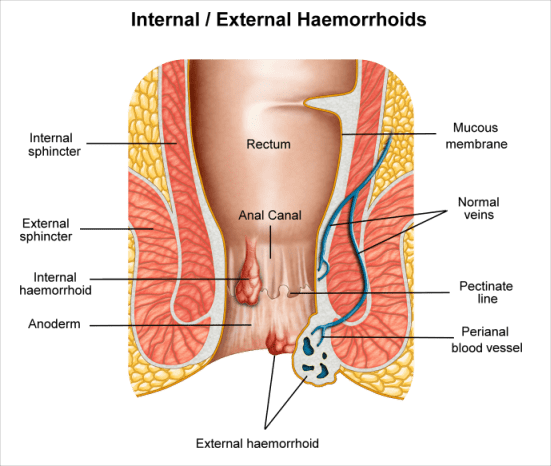Surrounding the anus and extending inwards and upwards along the rectum are several clusters of intricate veins designed to quickly drain blood from the area and return it to the liver and heart. A number of factors can cause these “hemorrhoidal” veins to become distended and swollen, at which point the sufferer is said to have either a hemorrhoid or hemorrhoids, or a pile or piles, where each term has the same meaning. Hemorrhoids (or piles) can thus be defined as swollen blood vessels located in the rectal area (similar to the varicose veins found in the legs) and they may sometimes become very painful.
For the sake of clarity, the American spelling of Hemorrhoid or Hemorrhoids is the English equivalent of Haemorrhoid or Haemorrhoids and being a difficult word to spell, other variants are commonly encountered which include both Hemroid and Hemroids. This website will generally use the American spelling but will also use the other variants from time to time.



